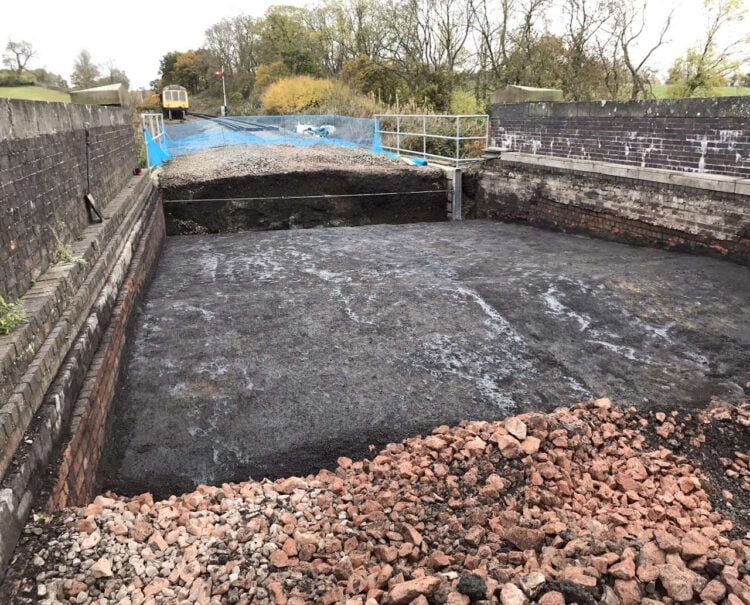The Gloucestershire Warwickshire Steam Railway (GWSR) has announced that a solution has been found for the repair of failed mortar joints below both parapets of Stanway Viaduct between Toddington and Broadway solution.
The unexpected discovery of the failed mortar joint required an urgent solution to its repair and work to stabilise the viaduct's parapets.
Work is now being carried out by Walsh Construction of Worcester, with the additional cost totalling approximately £270,000. As with phase 1 of the project, the Gloucestershire Warwickshire Railway Trust (GWRT) is providing the additional funding.

The failed joints are beneath both parapets and well below track level and were found to extend along almost the full length of the 200m viaduct. Examination of the joints showed that they had been progressively failing over many years, implying that there was an original design fault. The problem only came to light after all track materials had been removed so that the failed waterproof deck could be renewed, and it was found that both parapets were leaning slightly outwards.
The Gloucestershire Warwickshire Steam Railway is still looking for additional funds to repair the viaduct, and anyone who wishes to donate can do so at https://www.gwrt.org.uk/donate/stanway-viaduct-appeal.
Dr Graham Plant, GWSR Civil Engineering Director said: “We have pressed ahead to jet-wash and grout the failed joints. To ensure long-term stability the parapets will be secured by stainless steel wire ropes attached to the parapets and fixed to reinforcing mesh within the new concrete viaduct deck. The wire ropes can be adjusted to take account of construction tolerances in any future movement of the parapets.
“We and our consultants have burned the midnight oil exploring a range of options and this is the neatest and most cost-effective remedy. Importantly, it does not affect the heritage appearance of the 120-year-old viaduct and minimises delay in resuming train services to Broadway.”
In a letter to supporters, GWRT Chairman Philip Young explains: “The Trust has identified how it can fund the additional spend that is critical if work is to continue to ensure that our trains start running again to Broadway, as soon as possible. We are able to do this thanks to the support of all our members, donors and supporters.
“The current appeal remains open and needs to raise as much as possible over the coming months.”